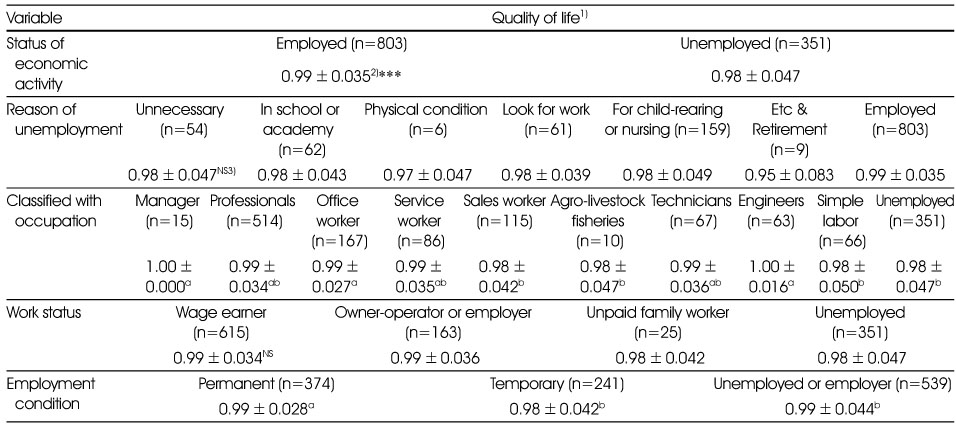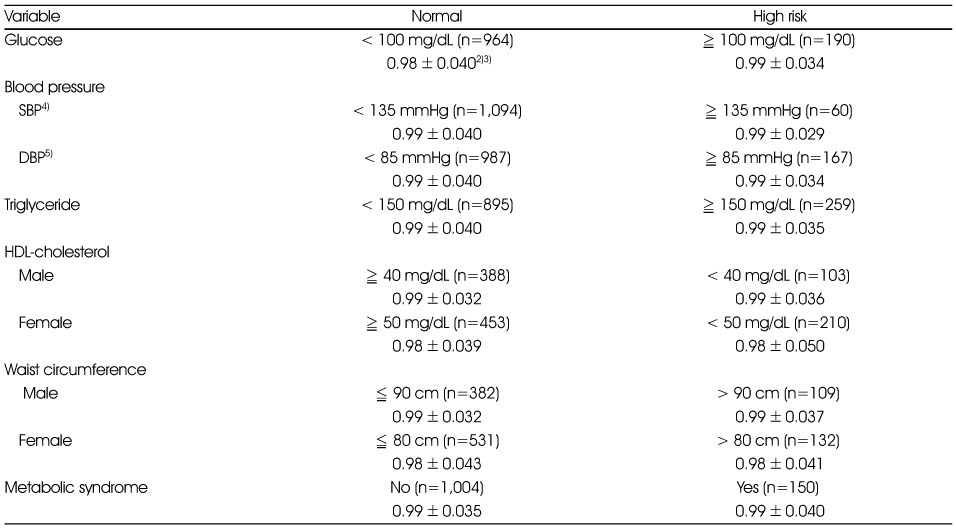References
1. Gerin P, Dazord A, Boissel J, Chifflet R. Quality of life assessment in therapeutic trials: rationale for and presentation of a more appropriate instrument. Fundam Clin Pharmacol 1992;6(6):263–276.
2. Wallander JL, Varni JW. Effects of pediatric chronic physical disorders on child and family adjustment. J Child Psychol Psychiatry 1998;39(1):29–46.
3. Bergner M. Quality of life, health status, and clinical research. Med Care 1989;27(3):S148–S156.
4. Walker SN, Volkan K, Sechrist KR, Pender NJ. Healthpromoting life styles of older adults: comparisons with young and middle-aged adults, correlates and patterns. ANS Adv Nurs Sci 1988;11(1):76–90.
5. Sohn S. Factors related to the health related quality of life in elderly women. Korean J Women Health Nurs 2009;15(2):99–107.
6. Brzyski RG, Medrano MA, Hyatt-Santos JM, Ross JS. Quality of life in low-income menopausal women attending primary care clinics. Fertil Steril 2001;76(1):44–50.
7. McEwen LN, Kim C, Haan MN, Ghosh D, Lantz PM, Thompson TJ. Are health-related quality-of-life and selfrated health associated with mortality? Insights from Translating Research Into Action for Diabetes (TRIAD). Prim Care Diabetes 2009;3(1):37–42.
8. Drewnowski A, Evans WJ. Nutrition, physical activity, and quality of life in older adults: summary. J Gerontol A Biol Sci Med Sci 2001;56Suppl 2. :89–94.
9. Pollak LO, McCune AM, Mandal K, Lundgren JD. Quantitative and qualitative analysis of the quality of life of individuals with eating disorders. Prim Care Companion CNS Disord 2015;17(2)10.4088/PCC.14m01667.
10. Kim HR, Oh K, Oh KO, Lee SO, Lee SJ, Kim JA. Quality of life in low income Korean aged. J Korean Acad Nurs 2008;38(5):694–703.
11. Jakobsson U, Hallberg IR, Westergren A. Overall and health related quality of life among the oldest old in pain. Qual Life Res 2004;13(1):125–136.
12. Kim YM, Hyeon SH, Song HS. The relationship among health status, health promoting behavior, depression and quality of life of health program participants. J Leis Recreation Stud 2008;32(4):33–46.
13. Rabin R, de Charro F. EQ-5D: a measure of health status from the EuroQol group. Ann Med 2001;33(5):337–343.
14. Kang EJ, Shin HS, Park HJ, Jo MW, Kim NY. A valuation of health status using EQ-5D. Korean J Health Econ Policy 2006;12(2):19–43.
15. Kim MK, Lee WY, Kang JH, Kim SM, Kim EM. 2014 clinical practice guidelines for overweight and obesity in Korea. Korean J Obes 2014;23(4):217–221.
16. Alberti KG, Eckel RH, Grundy SM, Zimmet PZ, Cleeman JI, Donato KA. Harmonizing the metabolic syndrome: a joint interim statement of the international diabetes federation task force on epidemiology and prevention; national heart, lung, and blood institute; American heart association; world heart federation; international atherosclerosis society; and international association for the study of obesity. Circulation 2009;120(16):1640–1645.
17. Lee SY, Park HS, Kim DJ, Han JH, Kim SM, Cho GJ. Appropriate waist circumference cutoff points for central obesity in Korean adults. Diabetes Res Clin Pract 2007;75(1):72–80.
18. The Koran Nutrition Society. Dietary reference intakes for Koreans 2010 [Internet] The Korean Nutrition Society; 2010. cited 2010 Oct 29. Available from:
http://www.kns.or.kr/.
19. Chung JY, Lee MY, Kim MJ. A study on the prevalence of chronic diseases, health-related habits and nutrients intakes according to the quality of life in Korean adults. Korean J Community Nutr 2010;15(4):445–459.
20. Lee YW. A study of quality of life in middle-aged men. J Korean Acad Nurs 2002;32(4):539–549.
21. Bowman S. Low economic status is associated with suboptimal intakes of nutritious foods by adults in the national health and nutrition examination survey 1999-2002. Nutr Res 2007;27(9):515–523.
22. Kwon MA, Kim TH. A study on the satisfaction with life for the elderly-comparison study of volunteer work group and economic activities group. J Korean Gerontol Soc 2008;28(4):1089–1111.
23. Jun EM, Cho DS. The relationship of symptoms of stress, cancer prevention behavior and the quality of life in women. Korean J Women Health Nurs 2005;11(2):156–162.
24. Kim EJ, Oh KJ, Ha EH. The vulnerability of married women on depression: Focused on life stress and coping processes. Korean J Woman Psychol 1999;4(1):1–14.
25. Lin QL, Kim HK, Ann JS. Relationship between depression and quality of life in elderly women living alone: The moderating and mediating effects of social support and social activity. J Korean Gerontol Soc 2011;31(1):33–47.
26. Lee DH. The effects of quality of life in the elderly's health condition. J Korean Gerontol Soc 2010;30(1):93–108.
27. Okoro CA, Brewer RD, Naimi TS, Moriarty DG, Giles WH, Mokdad AH. Binge drinking and health-related quality of life: do popular perceptions match reality? Am J Prev Med 2004;26(3):230–233.
28. Bae SY, Ko DS, Noh JS, Lee BH, Park HS, Park J. Relation of physical activity and health-related quality of life in Korean elderly. J Korea Contents Assoc 2010;10(10):255–266.







